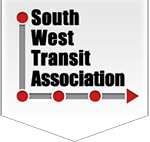South West Transit Association

Mayor of Oklahoma Stands Up for Transit in OpEd to NY Times

EVERY day, millions of Americans rely on a remarkable network of roads, bridges, subways, trains and buses to connect us to work, school and opportunity. But our transportation system, once the envy of the world, is in jeopardy. In New York City, subways and buses are overcrowded and often unreliable, and roadways and bridges are in dire need of repair and rehabilitation. From the next phase of the Second Avenue subway to plans to connect the Metro-North Railroad to Pennsylvania Station, to the proposed new subway line under Utica Avenue in Brooklyn, there isn’t a short- or long-term expansion project that isn’t dependent on federal funding.
In Oklahoma City, highway bridges are failing, city and state roads are unable to keep up with the region’s growth, and the bus system struggles to meet demands. Just last week in Oklahoma City, the state Transportation Commission declared an emergency after learning that more than half of the piers supporting a heavily trafficked bridge on an Interstate had been damaged by salt and weather.
The federal government sets transit and highway policies and funding levels for the country through the surface transportation authorization laws, generally in six-year cycles. But since 2009, Congress has funded transportation through a dozen short-term measures, ranging from one week to two years. On May 31, the current transportation authorization bill — the Moving Ahead for Progress in the 21st Century Act of 2012, or MAP-21 — is set to expire. Shortly thereafter, the Highway Trust Fund, which invests about $50 billion annually, will run out of money to cover the federal share of urgently needed roadway, bridge and transit projects in cities and states across the country.
Even if Congress averts this immediate crisis, the long-term threat to our economic security is just as serious. Right now, congressional leaders and the Obama administration are debating the size of the Highway Trust Fund and the direction of the federal surface-transportation program. Some are content with business as usual: a short-term extension and lurching from crisis to crisis. This would fail to provide the long-term certainty needed to plan and carry out multiyear transportation projects.
Working Americans pay the price of federal apathy. Those with little means have the fewest options; mass transit is often their only way to get around. Transit ridership is at record highs, with 10.8 billion trips in 2014. Meanwhile, in the 102 largest metropolitan regions, motorists take more than 200 million trips every day across deficient bridges. Freight volumes are expected to increase by 24 percent in the next seven years.
Federal investment has not kept pace with this demand, resulting in an outdated, overburdened surface transportation system that is ill equipped to handle current, let alone future, need. Spending on infrastructure in the United States has sunk to 1.7 percent of gross domestic product, a 20-year low.
The Department of Transportation estimates that by 2030, it will cost $84 billion to $105 billion a year just to keep the highway, bridge and transit systems in good repair, and up to $170 billion a year to improve conditions and performance.
Meanwhile, the rest of the world races ahead. Europe spends 5 percent of G.D.P. on infrastructure, and China 9 percent. Global cities like London and Beijing are investing in transit and rail projects on a vast scale, while in New York City, more than 160 bridges were built over a century ago, and large portions of our subway’s signal system are more than 50 years old. Some of the subway cars we ride in were built before 1975.
States
Oklahoma
